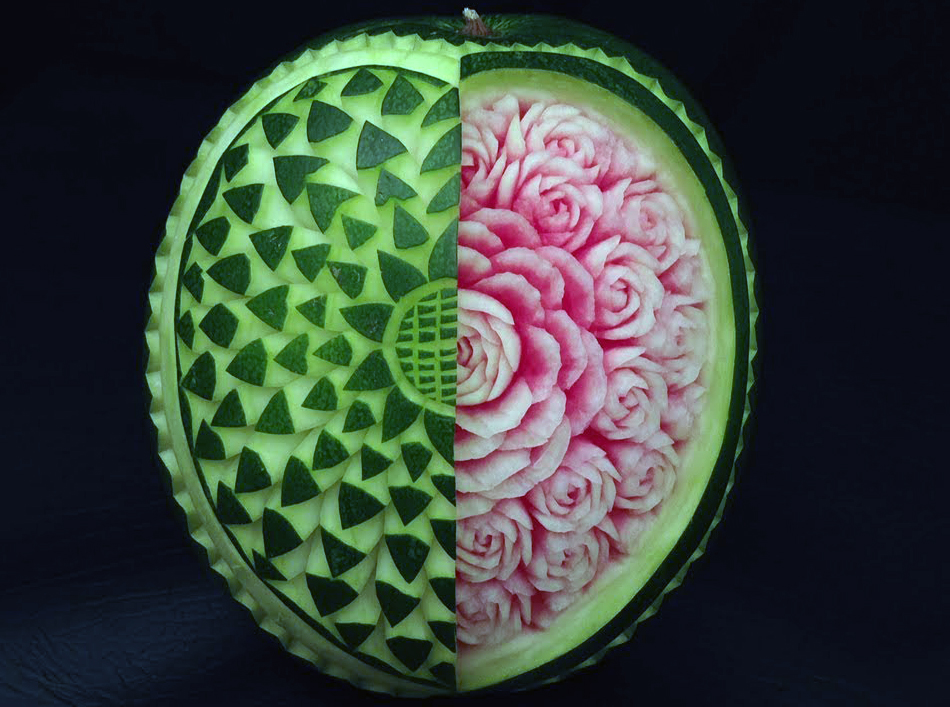Fruit Carving
- Details
- Category: Gastronomy

The fruit carving has very ancient origins, with decorative but also celebratory and religious functions.
In Europe it is documented since the '600 as art for the table with the gastronomic work of Matthias Giegher ("The Carver"), which describes the carving of oranges and limes in abstract and zoomorphic forms, in particular representing the Habsburg two-headed eagle.
But this art has taken on greater importance in Asia, especially in Thailand, where the tradition of carving the fruit originated in late 1300, becoming veritable field of school education, and occurs annually on "Loy Krathong" festival.
During this ceremony, in the first full moon night of November, votive sculptures of fruit are made and placed on floating woven leaves crowns that are released along water courses, as a ritual of purification and thanksgiving.








